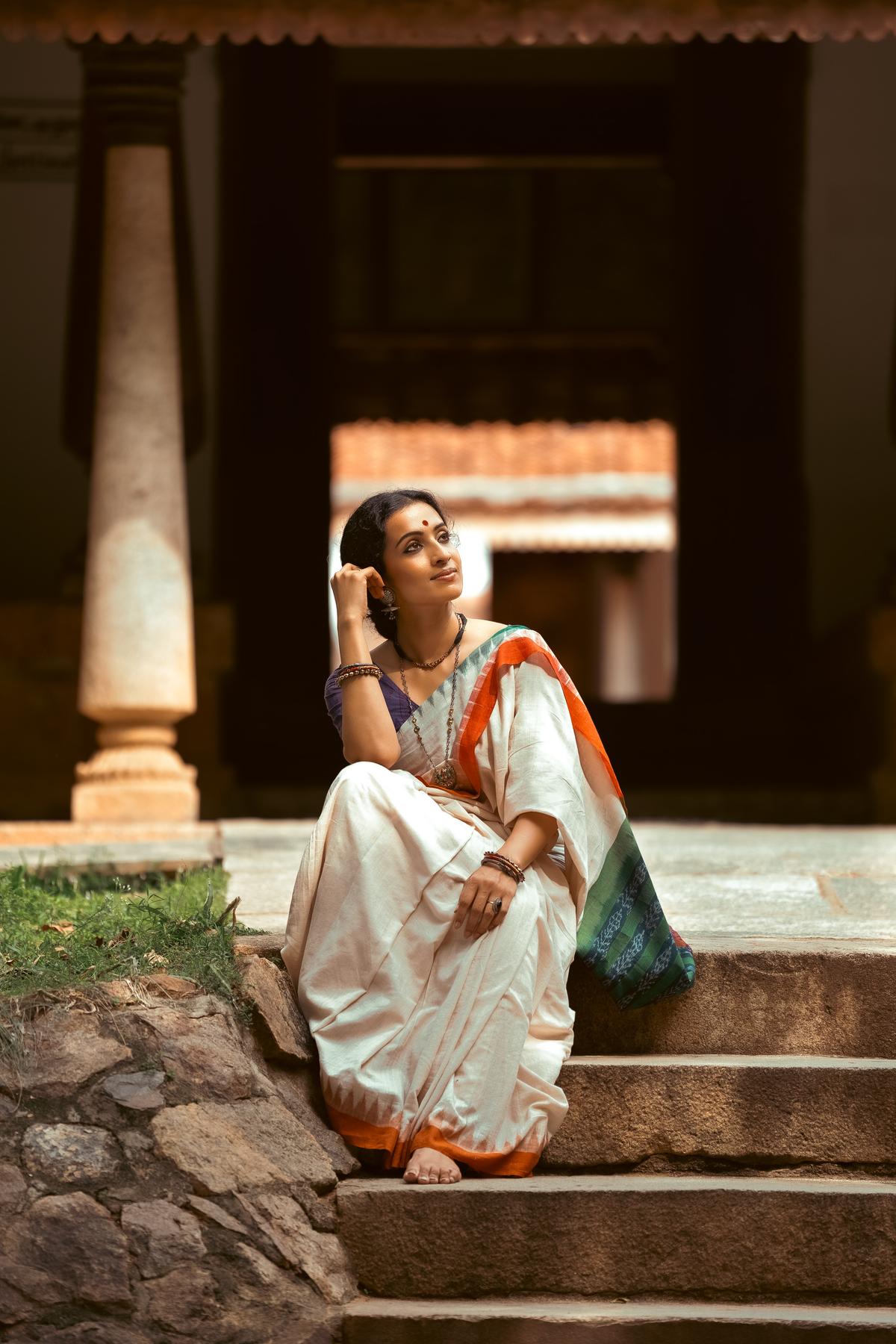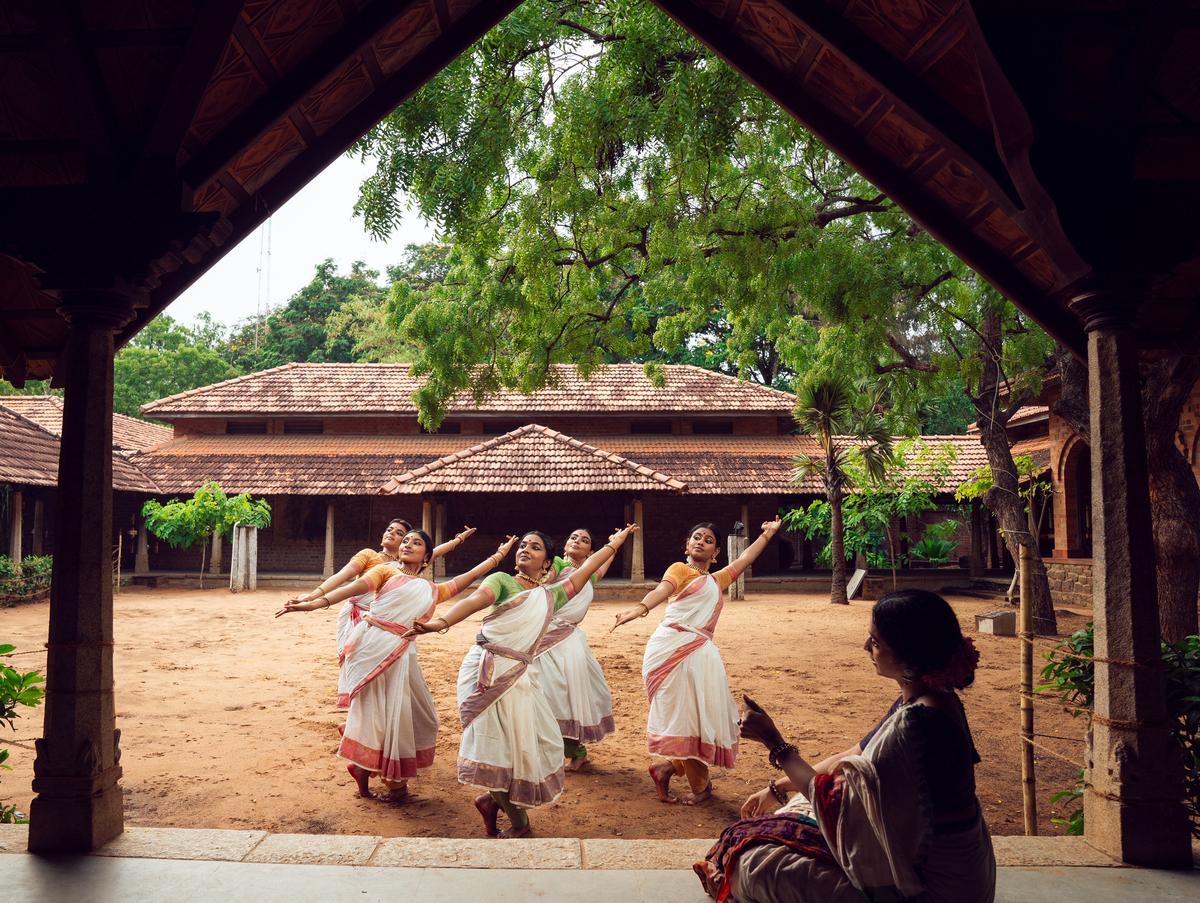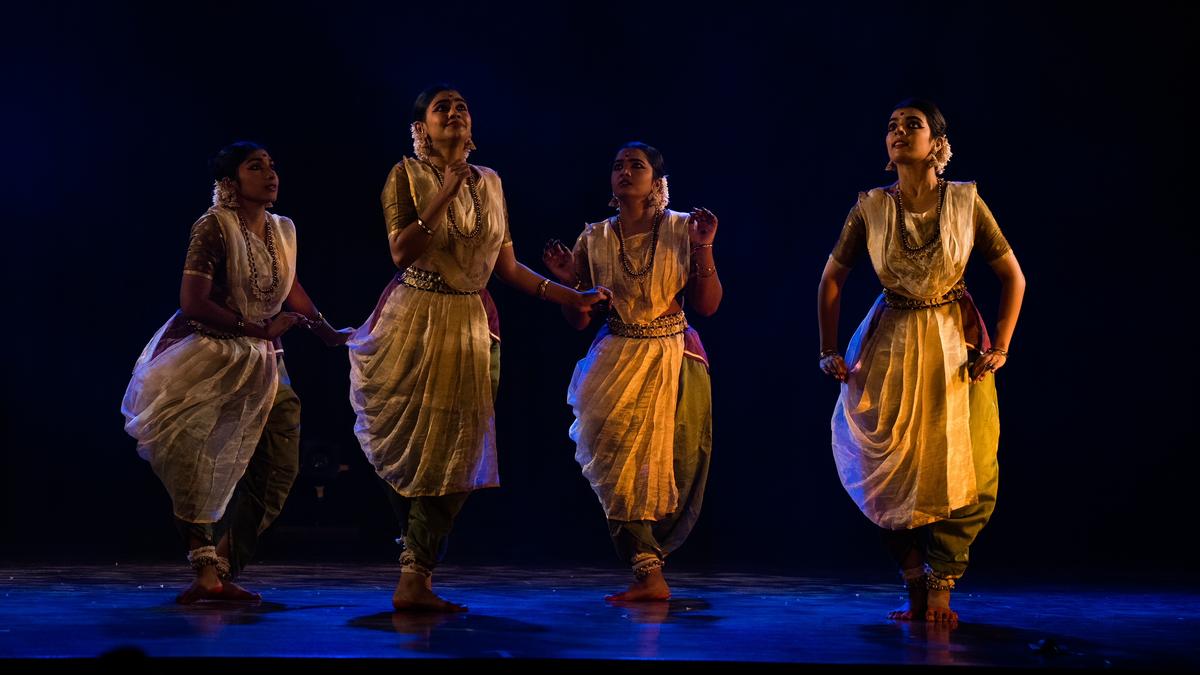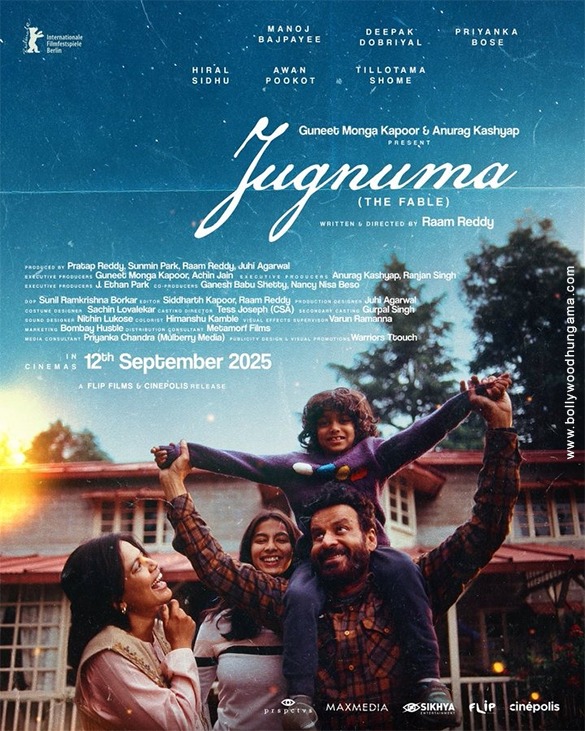When dancer-choreographer Divya Nayar speaks about her new work ‘Meenātchi-The Goddess Reigns’, it is less about reviving mythology than about recognising the goddess within us. To be staged under the aegis of her dance institution ‘Dakshina’, on September 21, 6.30 p.m., at Bharatiya Vidya Bhavan, it will be streamed on September 22.
Set against the cultural backdrop of Madurai, the performances traces Meenakshi’s journey as princess, lover, queen , warrior and ultimately, as goddess. Blending dance, music, poetry, and textile traditions, ‘Meenātchi’ seeks to capture not just a mythic narrative but the very spirit of Tamil culture and heritage.
‘Meenātchi’ seeks to capture not just a mythic narrative but the very spirit of Tamil culture and heritage.
| Video Credit:
Special arrangement
“For me, the identities of a daughter, sister, mother, lover, even a warrior are the easiest to choreograph,” says Divya. “Because these are lived experiences. I have had to be a warrior myself, in personal and professional spaces, when something went wrong or when loved ones needed protection. In that sense, Meenakshi is easier to understand as a daughter and a warrior than as a goddess. The divine is simply the whole of these parts.”

Divya Nayar
| Photo Credit:
Special Arrangement
The production opens with a royal couple longing for an heir and a daughter is born from a sacrificial fire. This child, Meenakshi, grows into a remarkable woman, revered for her courage and compassion. Unlike most women of her time, who stepped outside their homes, she was raised not to be a bride but a warrior and commander and lead her people.
The highlight of this work is its layered visual aesthetic, achieved through collaborations that honour fading textile traditions. Divya draws on her early training at Kalakshetra, where the uncut fabric drape was intrinsic to stagecraft. “It’s all about the beauty of the unstitched fabric, whether it’s the sari or panchakacham. Partnering with Tuhil, a collective devoted to reviving the handloom, was appropriate because their ethos is deeply rooted in Tamil tradition. Their handlooms are not mass-produced but carefully revived designs, making the costumes of the production an extension of the story.”
The production also draws on the expertise of hereditary makers of temple jewellery in Nagercoil. “Temple jewellery is integral to Bharatanatyam. But the craft is disappearing because the younger generation from these families doesn’t see a future in it. This collaboration became a way to acknowledge and spotlight that legacy,” she explains.

The production in collaboration with Tuhil, a collective devoted to reviving the handloom, showcases the beauty of the unstitched fabric.
| Photo Credit:
Special Arrangement
If textiles and jewellery provide the visual vocabulary, literature forms the soul. The choreography is woven with passages inspired by the Thiruvilayadal Puranam and Meenakshi Pillai Tamil, with compositions chosen by Professor S. Raghuraman.
For Divya, the most personal element in the production is her love for stories. In ‘Meenātchi’, the dance drama opens not with a straightforward retelling of the goddess’s life, but with a person walking into the Madurai temple, where the sculptures begin to narrate Meenakshi’s story. “If you have been to the temple, you know the sculptures are larger than life, you can see the veins on their legs, the toenails, the expressions. I often wondered: when the temple shuts and no one is around, do they come alive? That imagination became the heart of this production.”
What, then, does she hope the audience carries home? “That the story is eternal. Questions are often raised about whether Bharatanatyam needs modern, social themes to remain relevant. But a timeless story, told with beauty in music, textiles, and dance, can move anyone, whether from Madurai or Manhattan. It’s like Toy Story or Night at the Museum, where the inanimate comes alive through imagination. Classical arts too can transport you, offer escape, and give you something lasting to take back,” says Divya.
Published – September 17, 2025 02:35 pm IST



